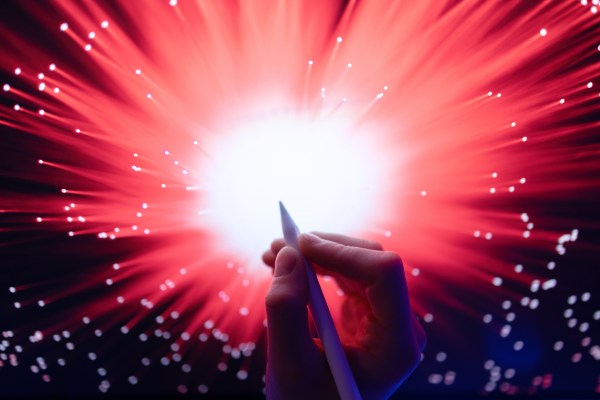[ad_1]
The Impression of Generative AI on Creativity

Within the late Fifties and early Nineteen Sixties, a gaggle of artists and writers discovered themselves dwelling collectively at a run-down lodge in Paris, which later grew to become generally known as The Beat Resort. This distinctive dwelling association fostered a vibrant environment of inventive cross-pollination, ensuing within the start of the Beat Era.
Among the many inventive people residing on the lodge was Brion Gysin, an artist who got here up with an revolutionary method generally known as reduce ups. Gysin would meticulously reduce and rearrange sections of books and periodicals, creating completely new inventive expressions. Nevertheless, not everybody whose work was repurposed by Gysin appreciated this transformation of their fastidiously crafted phrases, as described by creator Barry Miles in his e book The Beat Resort revealed in 2000.
At this time, we will observe an analogous rigidity between artists and a brand new technology of creators as a result of the usage of generative AI. This expertise permits for the repurposing and reimagining of current art work and phrases, resulting in debates in regards to the boundaries of creativity and originality, very similar to Gysin’s work sparked throughout the counterculture motion of the Nineteen Sixties.
Time Turns into an Ally
Scott Belsky, Chief Technique Officer at Adobe, joined the corporate after his startup Behance was acquired for $150 million in 2012. In 2019, Adobe launched a function known as Moodboards, offering artists with an area to assemble inventive inspirations for their very own creations. The idea behind Moodboards was to supply artists a place to begin for his or her inventive concepts.
The Limitations of Generative AI
Whereas generative AI has undeniably opened up new prospects for inventive expression, it’s essential to acknowledge its limitations. One of many major issues is the potential lack of the human contact within the inventive course of. Many argue that the true essence of artwork lies within the distinctive perspective, feelings, and experiences of the artist, which can’t be replicated by algorithms.
One other necessary consideration is the moral facet of utilizing generative AI. When creating art work or written content material, it’s important to respect mental property rights and acquire correct permissions. With the benefit of producing content material utilizing AI, there’s a danger of unintentionally infringing upon copyright legal guidelines and undermining the efforts of unique creators.
The Way forward for Creativity
Regardless of the debates and challenges surrounding generative AI, it’s unlikely to eradicate actually inventive jobs completely. As an alternative, it has the potential to enrich and improve human creativity by providing new instruments and prospects. Artists can use generative AI as a supply of inspiration, refining and remodeling the output to align with their distinctive inventive imaginative and prescient.
As expertise continues to advance, it’s essential to discover a stability between the capabilities of AI and the irreplaceable qualities of human creativity. By embracing the probabilities provided by generative AI whereas staying true to the core components of artistry, we will form a future the place expertise is a invaluable ally fairly than a risk to creativity.
FAQs
Q: What’s generative AI?
Generative AI refers to the usage of algorithms to generate new content material, reminiscent of art work, music, or written textual content. It includes coaching fashions on current information to create unique output that mimics human creativity.
Q: How does generative AI influence the inventive business?
Generative AI has each constructive and unfavorable results on the inventive business. It opens up new prospects for inventive expression and inspiration, but it surely additionally raises issues in regards to the lack of human contact and moral concerns surrounding mental property rights.
Q: Can generative AI change human creativity?
No, generative AI can’t fully change human creativity. Whereas it may well help within the inventive course of and provide new instruments, the essence of artwork usually lies within the distinctive perspective and feelings of the artist, which can’t be replicated by algorithms.
Q: How can artists use generative AI of their work?
Artists can use generative AI as a supply of inspiration, leveraging its output to spark their inventive concepts. They’ll then refine and rework the generated content material to align with their inventive imaginative and prescient, including their private contact.
Q: What are the moral concerns of utilizing generative AI?
When utilizing generative AI, you will need to respect mental property rights and acquire correct permissions for any content material generated. There’s a danger of unintentionally infringing upon copyright legal guidelines, so artists should be vigilant and guarantee compliance with moral pointers.
Conclusion
Generative AI has undoubtedly sparked a dialogue in regards to the boundaries of creativity and the function of expertise within the inventive course of. Whereas it brings new prospects and challenges, you will need to do not forget that human creativity stays invaluable. By embracing the ability of expertise whereas staying true to the distinctive qualities of artistry, we will form a future the place generative AI enhances and enhances human creativity, fairly than changing it.
[ad_2]
For extra info, please refer this link
